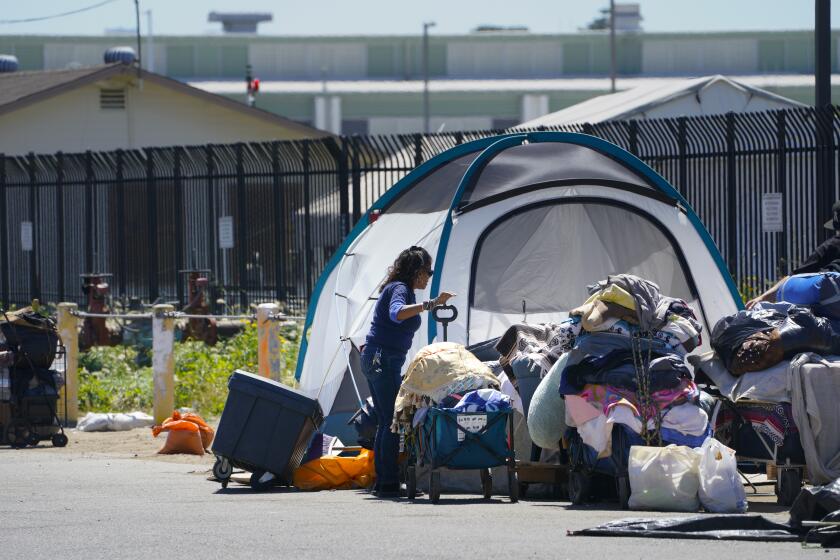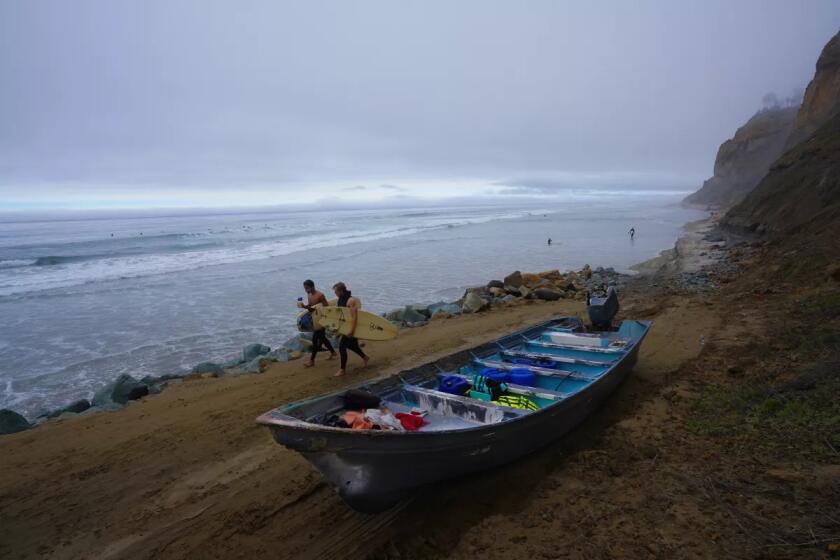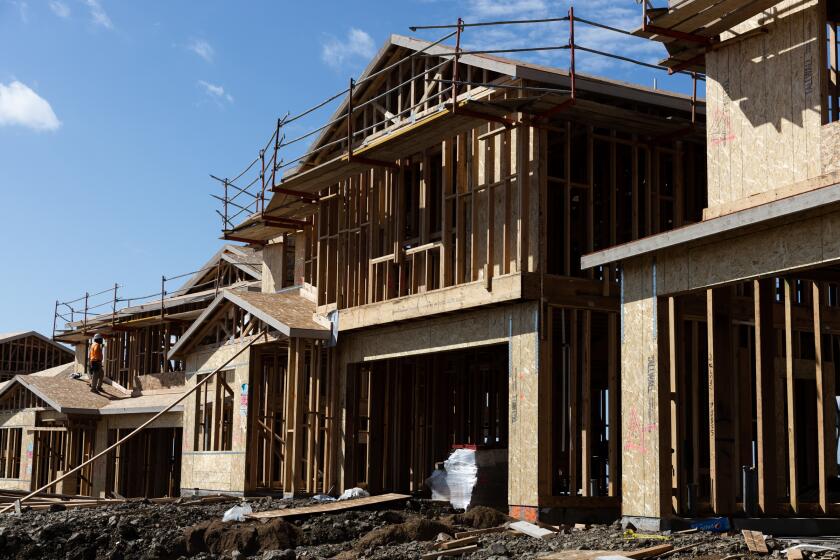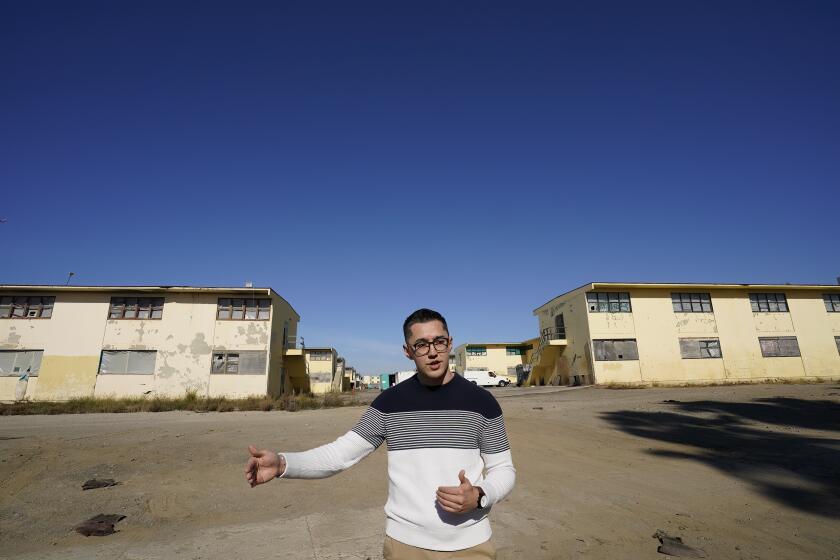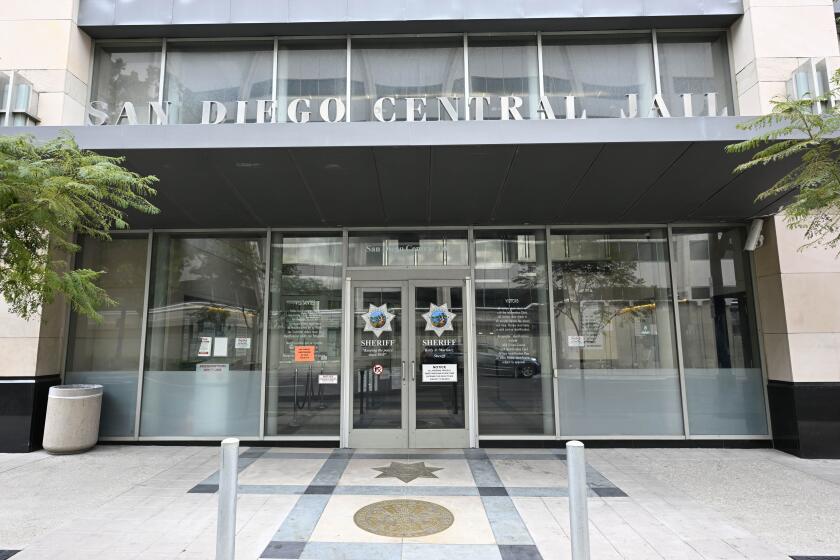Column: Controversy over San Diego bike lanes grows amid skyrocketing costs, concerns about economic impact
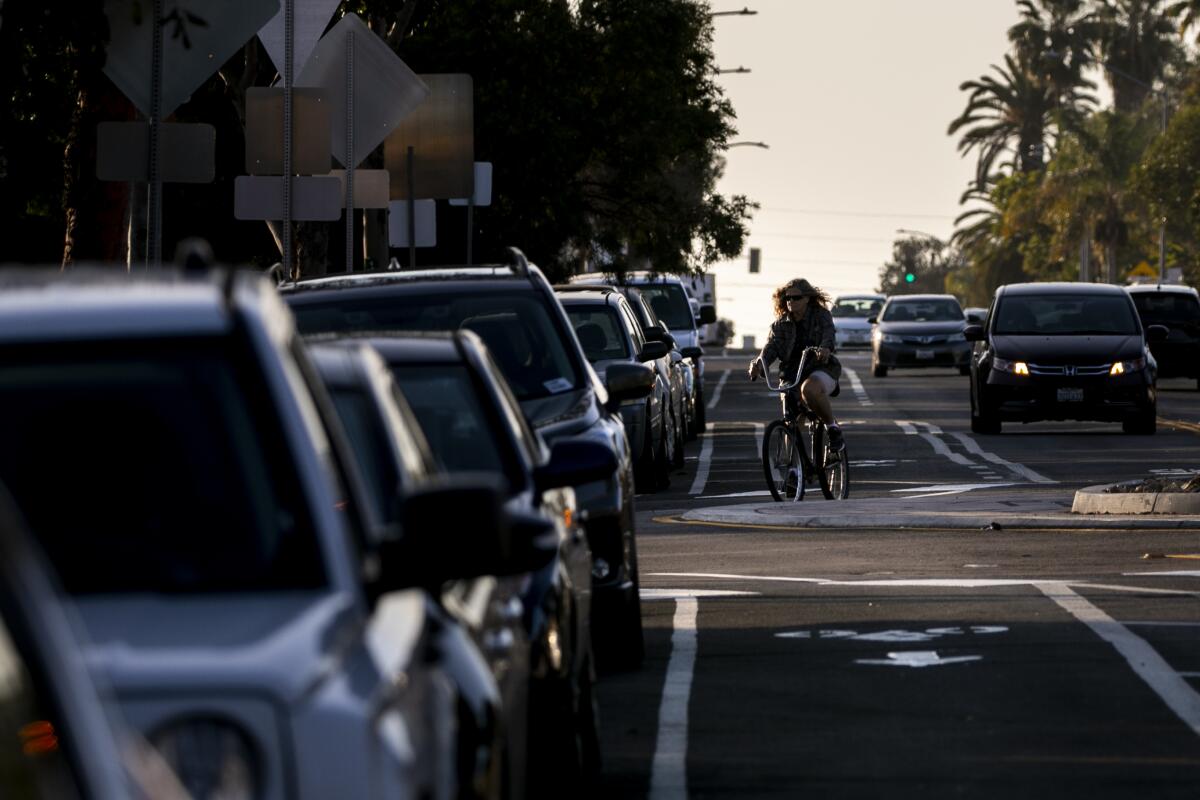
Studies in other cities show bike lanes have had negligible or positive effects on businesses. San Diego has said it will examine the impacts on the 30th Street corridor.
One day, the hotly disputed bike lanes on 30th Street in San Diego may turn out not to be so bad for businesses there.
Several studies in other cities have shown bike lanes — which, as in San Diego, replaced parking spaces — at worst had a mostly neutral impact on businesses, or a slightly positive effect on their sales.
San Diego plans to conduct such a study over time that may help determine whether the bike lanes on 30th hurt local merchants as some feared.
One thing not in question about bike lanes is the eye-popping nature of the latest estimated cost of the planned 77-mile, regionwide network. The price tag was once $200 million. Now, as Joshua Emerson Smith of The San Diego Union-Tribune reports, the cost has more than doubled to $446 million.
Even in an era when cost overruns for infrastructure projects are common, that’s a staggering increase. Skeptics already had raised doubts about whether the eventual demand would justify the original estimate, particularly with the more expensive protected bike lanes, which use concrete curbs and plastic pylons to separate bike riders from automobile traffic. They can require substantial road work, while reducing lanes and parking for automobiles.
The bike-lane network has encountered delays for various reasons, including neighborhood opposition. But the San Diego Association of Governments admitted it whiffed badly estimating what this would cost.
“The bike program, we screwed up,” SANDAG Executive Director Hasan Ikhrata told Smith. “I don’t disagree.”
More than one person has done the math: The new estimate brings the cost of the bike network to $5.79 million per mile.
San Diego is well behind the curve of the likes of Portland, San Francisco and parts of New York City, which over the last couple of decades or so have built out bike lane systems and, importantly, have entrenched bicycling cultures. Whether San Diego achieves either remains to be seen. SANDAG seems committed to moving ahead with the bike plans, but if delays and cost increases continue, it’s hardly wild speculation to suggest completion of the network could be threatened.
The number of bicycle commuters in San Diego County has increased slowly over time, according to a study by the University of San Diego. The percentage of people commuting by bike rose from 0.4 percent in 2018 to 0.6 percent in 2019. Within the city of San Diego, it’s around 2 percent.
Bike riding took off during the stay-at-home order amid the coronavirus pandemic in 2020, increasing by 40 percent, according to SANDAG. People were staying closer to home and riding bikes more often for short trips, recreation and fitness, though the numbers have dropped since the restrictions were lifted and more people began heading back to the office.
The 30th Street Protected Bikeways Mobility Project runs along a 2.4-mile stretch of road and does away with hundreds of parking spaces. Businesses and residents have held protests, circulated petitions and filed a lawsuit to stop it, to no avail.
Recently, critics of the bike lanes reviewed videos from a security camera on the 3400 block of 30th Street to assess ridership — which included people on bikes, scooters and skateboards — during peak weekday commuting times, between 7 a.m. and 9 a.m. and from 4 p.m. to 6 p.m., according to the Times of San Diego.
During one week in October, the news website said, the video count revealed the average number of riders per peak commuting hour was 16 Monday through Friday.
Bike lane supporters noted the project had only been up and running since mid-summer and that in-depth research down the line would be required to determine the use and impact.
Everett Hauser, program manager with the city’s Transportation Department, told the Union-Tribune in July the city planned to study the economic impact the bike lanes have on the community’s businesses over time. This week, the city’s Mobility Department said the tentative plan is to conduct the study from August 2021 through August 2022 and then continue that cycle going forward. Under that timeline, the first report would be anticipated by fall 2022, according to department public information officer Anna Vacchi Hill.
San Diego journalist Doug Porter recently pointed out in his Words & Deeds blog that studies elsewhere have countered the notion that bike lanes hurt businesses.
Bloomberg CityLab reviewed studies in several cities.
“And they all reach a similar conclusion: replacing on-street parking with a bike lane has little to no impact on local business, and in some cases might even increase business,” the article said. “While cyclists tend to spend less per shopping trip than drivers, they also tend to make more trips, pumping more total money into the local economy over time.”
Business data was collected along York Avenue in Los Angeles before and after bike lanes were installed.
“Sales tax revenue, a proxy for business success, was higher on the section of York with the new bike lane than the section without it, $1,116,745 to $574,778,” according to CityLab, which noted that revenues increased in both areas.
That was in 2015. Two years ago, the Journal of the American Planning Association reported similar results along Toronto’s Bloor Street after bike lanes were put in: The number of customers and spending increased at businesses.
It wasn’t all good news for bike lanes. Some general-service businesses, unlike restaurants and retail, experienced a slight decline on Bloor Street. Three New Zealand cities found drivers spent more than “non-drivers,” according to CityLab, which added the gap narrowed considerably in central city locations.
Hopefully, the San Diego city study eventually will give an accurate assessment of how bike lanes affect 30th Street businesses.
Bike lanes are part of SANDAG’s regional strategy to reduce greenhouse gas emissions that contribute to climate change by attempting to convince residents to rely less on automobiles. On Friday, the SANDAG board approved a 30-year blueprint to overhaul the county’s transportation system that focuses on trains and trolleys along with express buses and managed auto lanes, with high-density housing adjacent to numerous stations.
Voters will be asked to approve multiple tax increases to finance the estimated $160 billion plan.
The costs, and maybe even some overruns, might be worth it if a whole lot more San Diegans start taking alternative transportation. So far, they’ve shown little inclination to do that.
Get Essential San Diego, weekday mornings
Get top headlines from the Union-Tribune in your inbox weekday mornings, including top news, local, sports, business, entertainment and opinion.
You may occasionally receive promotional content from the San Diego Union-Tribune.

